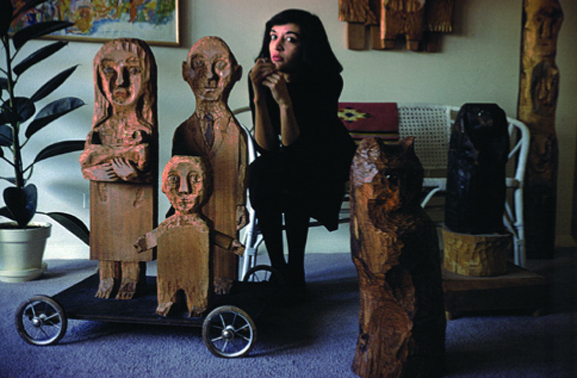Portraits of the New York School
These enduring images come via the lens of Dan Budnik, the renowned photographer who, over the course of his career, has captured on film the seminal artists of the New York School. Coming onto the scene at the time when Abstract Expressionism began to give way to Pop Art, Budnik became an insightful chronicler of the 1950s and 60s New York art world, enlivened by the imagination, talent and diverse idiosyncrasies of the characters around him. More than an observer, he was a part of the art community, working and living alongside many of the cen- tury’s most creative and influential figures. His images often detail in-the-spotlight individuals in some of their most private moments, capturing the more mundane aspects of lives not often remembered as such. Today, Budnik reminisces a bit about the heyday of the New York School and some of the artists he called contemporaries. “I was always the young one,” Budnik explains, recount-ing how, as a bright-eyed young photographer of 18, he first came into contact with the subjects of his renowned images.
“Of all the ar tists I pho- tographed, I got to know de Kooning and David Smith the best,” he recounts. Budnik first met de Kooning in 1953, right before getting drafted to serve in Korea.Thus, he lost touch with the artist and did not actually get to know him until 1962.
As Budnik tells it, de Kooning ini- tially did not want to be pho- tographed while working.“He feared that he might look like an actor. He did not want to look staged,” the photographer elaborates.
Evidently, the painter overcame that aversion; a 1962 shot shows de Kooning in action; another one from 1968 depicts the artist contemplating a work in progress.When not paint- ing, he appears pensive—a handsome man with that touch of melancholy women often find difficult to resist. A 1962 photograph of David Smith in the snow depicts the artist as an earthier, stocky man in command of his surroundings—which in this case includes two of his sculptures, Two Wing Circle and Untitled. Another black-and-white photo features Smith cooking on a crowded stovetop.
 “Nobody had any money, but then it was never about money,” explains Budnik of the New York scene. “Sculptors had the hardest time selling their work. They used difficult and expensive materials and the technologies [cutting, casting, welding, etc.] were not what they are today.” (On November 5, 2005, Eli Broad bought Smith’s Cubix XVIII at Sotheby’s for $23.8 million, one of the last works Smith made before his death in a 1965 car crash.)
“Nobody had any money, but then it was never about money,” explains Budnik of the New York scene. “Sculptors had the hardest time selling their work. They used difficult and expensive materials and the technologies [cutting, casting, welding, etc.] were not what they are today.” (On November 5, 2005, Eli Broad bought Smith’s Cubix XVIII at Sotheby’s for $23.8 million, one of the last works Smith made before his death in a 1965 car crash.)
His photographs offer glimpses of artists’ lives outside the studio as well; outings to the country (a 1955 photo shows de Kooning, Philip Guston, Ed Chavez, Herman Cherry and Ruth Kligman at Woodstock) and to the beach to escape stifling city summers make appearances in his portfolio.
It’s clear from his shots that Budnik had personal connections with many of these artists.Today, he describes Johns as cooperative but lacon- ic and shy, Rothko as intellectual, sensitive and withdrawn, Nevelson as aloof but kind, and Frankenthaler as gregarious and playful. “People looked after each other,” he says of his contemporaries. And yet, despite the closeness of the players on the scene, openings were attended in jacket and tie—pseudo-scruffiness was for wannabes, as were obvious efforts to appear fashionable.A photograph by Frankenthaler shows Robert Motherwell and Budnik in black tie, seated under a sign in a parking garage after Motherwell’s retrospective opening at the Museum of Modern Art in 1965.
Budnik describes the epoch spanning the mid-50s to late 60s as full of possibilities—an electrifying time for America. It was also a period of intense social change, he says, especially since the civil rights movement was gearing up, and many artists were leaning politically toward the left.
“The NewYork art scene was vibrantly alive but we did not fully appre- ciate it while it lasted,” says the photographer.
“It probably ended due to success—when de Kooning sold his first painting for $26,000,” he surmises. After that, de Koonings sold as quickly as his dealer, the Sidney Janis Gallery, could get price tags on paintings.
Looking back on his long career, Budnik, who now lives in Tucson, Arizona, is remarkably candid about his accomplishments and the way in which his images are seen today.“Sometimes I feel like Forrest Gump, hav- ing been involved in all that history,” he smiles.
Pictured: Dan Budnik, Jasper Johns with “Flag” Paintings, Leo Castelli Gallery, New York, 1958. Courtesy of the artist.


